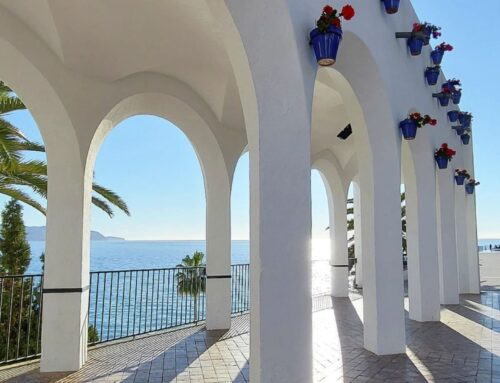Home buyers inspection checklist in Costa del Sol

Author: Eve Keerus-Jusupov, CEO of Merlis Homes SL.
I help you find your ideal second home or commercial property on the Costa del Sol.
Have a question? Contact me via WhatsApp
Imagine that moment when you step into your dream home. The sun shines through the window, illuminating the spacious living room, and the view from the balcony is breathtakingly beautiful. That feeling, that moment when everything seems perfect – that’s what can win your heart. But here lies a danger too.
Emotions often play a big role in the real estate buying process. This home feels just right – it’s the place where you see yourself and your family living happily. However, relying on emotions can mean overlooking important facts that might cost you later.
Consider, for example, hidden defects that might not be noticeable at first glance. There might be a leak under the roof that becomes apparent during the first rain, or the electrical system could be outdated and require expensive upgrading. These are issues that might not be obvious at first, but fixing them can turn out to be costly.
Therefore, while falling in love with a property is understandable and often part of the buying process, it’s crucial not to let emotions drive your decision-making. Conducting technical inspections, verifying facts, and even consulting with experts can ensure that your dream home does not become a financial burden. An emotional decision can bring momentary happiness, but long-term satisfaction and peace of mind come from thoughtful and informed choices.
Don’t Let Emotions Lead – How to be a Smart Real Estate Buyer?
Here i your new home inspection checklist, some key points you should check.
Construction Quality and Condition
The new houses and apartments in Costa del Sol are built using modern methods and high-quality materials, which means their quality is quite high and comparable to what can be found elsewhere in Europe.
However, older buildings, constructed with traditional methods, might not be as high-quality. These houses may have issues like poor thermal insulation and moisture.
Crack Inspection. Monitor cracks on the walls and ceilings. Small superficial cracks are common, but larger or penetrating cracks could indicate structural problems.
Moisture Damage. Check for signs of moisture damage, such as mold, rot, or changes in color. This is particularly important in bathrooms and kitchens.
Floor Levelness. Examine whether the floors are level. Sloped or uneven floors might indicate settling or problems with the underlying structure.
Roofing and Rainwater Systems
In Costa del Sol, roofing and rainwater systems need to be robust due to the often sunny and hot climate, which is also marked by strong periods of rain.
In newer buildings, modern materials and technologies are typically used, making the roofs and rain gutters durable and reliable.
However, in older houses, issues with roofs and rainwater systems, such as leaks or blockages, may be more common, especially if maintenance has been inadequate.
Visual Inspection. If possible, inspect the roof with binoculars or ask a specialist to do it. Look for missing, broken, or shifted roof tiles.
Rain Gutter Inspection. Ensure that the gutters and drainpipes are clean and in good condition. Check that water is being correctly directed away from the foundation of the building.
Leak Detection. Inquire about any past roof leaks and inspect indoor ceilings for stains or damage.
Electrical System and Plumbing
New houses and apartments are equipped with modern electrical and plumbing systems that operate efficiently and safely.
These systems are designed to meet today’s needs, such as higher electrical loads and efficient water usage.
However, in older buildings, the electrical system and plumbing might be outdated, which means they may not be as reliable or safe and might require upgrading or repairs.
Electrical Panel Inspection. Check whether the electrical panel is modern and properly labeled. Old panels can be a source of danger.
Switches and Outlet Testing. Test all switches and outlets to ensure they are in working order.
Plumbing Leak Inspection. Check for leaks under faucets and at plumbing connections. Also, be aware of any unusual odors, which could indicate plumbing problems.
Heating and cooling systems
Modern, energy-efficient systems are often used in new houses and apartments to keep homes cool in summer and warm in winter without wasting energy.
In older buildings, however, heating and cooling systems may be outdated and less efficient, which means they can use more energy and cost more. Nor are your living conditions comfortable if the only cooling system is a window.
Performance checks. Turn on heating and cooling systems to check that they are working efficiently.
Maintenance history. Ask for maintenance records and history to see if the systems have been regularly maintained.
Energy efficiency. Find out how energy efficient the systems are, as older systems can increase heating costs.
Check electricity bills. Ask to see electricity bills for summer and winter months.
Windows and Doors
In new buildings, windows and doors are often double-glazed and well-insulated, helping to keep homes cool in summer and warm in winter.
This also means that both heating and cooling costs are lower, as maintaining room temperature is more efficient.
However, in older buildings, you may find single-glazed windows and poorly insulated doors, which can lead to heat loss and drafts, thereby increasing both energy costs and discomfort.
Seal Check. Ensure that windows and doors close properly.
Double Glazing. Verify that the windows are double-glazed, which helps reduce heat loss and dampen external noise.
Wear and Damage Inspection. Examine the frames of windows and doors for signs of wear and damage.
Appearance and surroundings
The condition of the façade and the landscaping around it play an important role in buying and selling a property, influencing both the decision to buy and the value of the property.
Checking the exterior of the building
Check the exterior of the building, such as the façade and paint. Look for signs of wear or damage. Façades can be susceptible to moisture damage, especially if rainwater drainage is inadequate. Moisture can cause mould and peeling of the render.
Garden and landscaping checks
Check the condition of your garden and landscaping. Uneven ground or poorly maintained gardens can indicate problems such as:
Drainage problems. Uneven ground can be a sign of poor drainage. This means that rainwater does not drain away properly, which can lead to water pooling near the building, possible flooding and damage to the foundation.
Foundation problems. Uneven ground can also indicate foundation subsidence or movement, which is a serious problem. This can lead to structural problems in the house, such as cracks in walls and uneven floors.
An unmaintained property. A poorly maintained garden can be a sign that the property has not been properly maintained. It may also indicate that other parts of the building may also need attention or repair.
The presence of pests. Neglected gardens can attract pests, such as rodents or insects, which can damage both the garden and the building.
The health of landscaping and trees. Dead or diseased trees and plants can be a sign of soil problems or other environmental factors that can affect other landscaping and the property as a whole.
If you decide to check the property yourself, be prepared
There are 3 steps in the property inspection process: preparation before the inspection, actions during the inspection and steps after the inspection.
Here’s a specific guide on what to do for each stage:
Before the visit
Make a checklist. Make a list of all the items to be checked (such as the condition of the façade, inspection of the garden and landscaping, plumbing and electrical system, etc.).
Stock up on the necessary equipment. Take a notebook, pen, tape measure, torch and a camera or smartphone for taking photos.
Find out more beforehand. Get as much information as possible about the property beforehand, such as previous repairs, maintenance history, year of construction, utility bills.
Prepare the questions. Write down all the questions you want the seller to answer. That way you won’t forget them later
During the check
Visual inspection. Use your checklist and look carefully at all items. Take notes and photos.
Measurements and detailed observation. Measure the rooms, check that the windows and doors are closed, check the levelness of the floors, turn lights on and off, check the water pressure, etc.
Ask questions. Ask the seller or broker questions about the history of the property, repairs and other important aspects.
After the inspection
Analyse the notes and photos taken. Review all the data collected and assess whether any further checks or corrections are needed.
Consult the experts. If you find any problems or have any doubts, consider showing a property inspector or building expert to get a professional opinion.
Draw up next steps. Decide whether you need more information, additional inspections or negotiations with the seller to resolve the problems found.
This was the home buyers inspection checklist in Costa del Sol
The most important thing is to be thorough and attentive throughout the process, so as to make informed decisions and avoid future problems.
Together, we’ll work with you to find the property that’s right for you, with both your heart and your head involved in the selection process.
Contact merlis@merlishomes.com or call +372 5679 9217.



